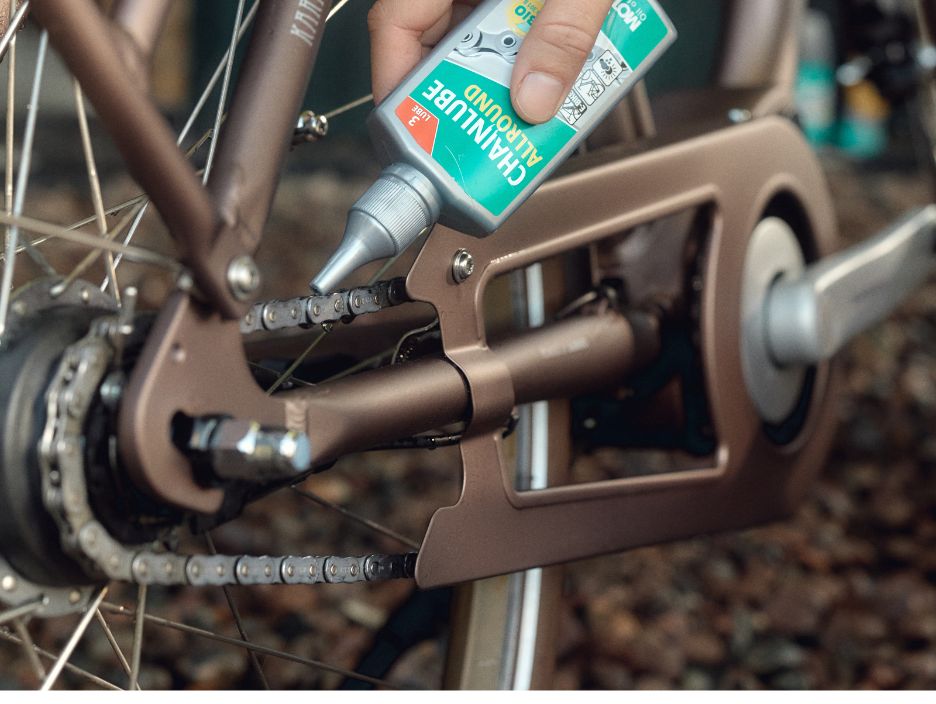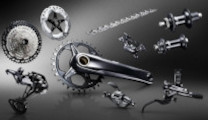A clean bike reduces the chance of damaging your components and allows you to see if any issues or repairs are needed. And a sparkly ride just looks better, doesn’t it? Before you begin any maintenance, the task starts by washing your bike. Ready to clean your bike in 20 minutes? Start the clock. Let’s go!

Minute 1-3: Prep
Assemble your cleaning gear: A bucket of warm, soapy water, a bike cleaning spray, a set of brushes or sponges, and a dry cloth for the finish.

Minute 3-7: Spray
Start by rinsing the bicycle with water to remove loose dirt or debris. You can use a hose, but be cautious not to use high pressure as it may damage sensitive parts. Also, take care to avoid electrical connections. After the initial rinse, spray the bike cleaner or soapy water over every part of your bicycle and leave it to work for a few minutes.
While you clean your bike, check the battery’s electric contacts to avoid dirt build-up, which may cause power delivery issues. Never use harsh chemicals. Instead, opt for a damp cloth to wipe it gently. Always remember not to submerge the battery in water or spray it directly with a host of pressure washers.

Minute 7-12: Brush
While the cleaner is doing its job, soak your brushes or sponge in the bucket with warm, soapy water. Start gently scrubbing your bike, beginning from the top and working your way down. Pay close attention to the drivetrain (chain, chainrings, cassette, derailleurs), this area often accumulates the most grime and dirt. Use a toothbrush to reach those tricky gaps around the chain and cassette.
While you are scrubbing, look for any signs of wear. The teeth on the cassette and chainrings should not have any pointed or sharp parts. Look out for frayed ends to cables and deep scratches or scrapes to your frame or components. Look for worn areas on your tires, flat patches, cuts or abrasions. If you spot anything that isn’t pristine, make a note of it.

Minute 12-15: Rinse
After you have loosened and scrubbed off the dirt, rinse your bike thoroughly to remove the soap or cleaner. Make sure not to leave any soap residues behind.

Minute 15-17: Dry
Use your dry cloth and remove as much water as possible to prevent rust, particularly the chain and metal parts. An air compressor or even a hair dryer is a good way to ensure all water is blown away, especially around the electrical connections of your battery. Sunlight also helps, if available.

Minute 17-20: Lube
Once the bike is dry, it’s time for lubrication. Lubricant helps to protect your bike from rust and damage. It also keeps moving parts smooth and silent as you cycle. If you are using spray oil, be very careful not to get any oil onto the surfaces of your brake pads, rotors or bike rims. This will contaminate the pads and make braking less effective.
The chain requires the most regular lubrication. Always use an oil designed for bike chains. It will work better and last longer. Lighter oils can easily be washed off by rain or splashes or get sticky with dust.
Apply a drop of lube to each link and rotate the pedals to work it in. After a few minutes, wipe off the surplus lube with a clean, dry cloth.
Derailleurs are the gear changing mechanism – both the front and rear need light lubrication. With the bike stationary, shift the front derailleur over the largest chainring, and the rear derailleur onto the smallest cog. Apply a drop of lube to the pivot points, then manually move the derailleur to help work the lube into the pivots. Wipe off the excess.
If your bike has external cabling (the gear and brake cables running along the outside of the frame), lube will be needed. Apply a drop of lube to the top of the cable where it enters the housing. Then, work the gear or brake lever to help move the lube down the cable.
Remember: Always make sure to wipe off any excess lubricant to avoid attracting dust and dirt, which can make a sticky mess and wear components faster. Using non-bicycle-specific lubricants, such as general-purpose oils and greases, may not provide the necessary longevity or performance for the demands of cycling.

M-Check
Once you have washed your bike and pumped up the tires, detecting any issues needing expert attention is easier. Use a technique called the M-Check. Bike mechanics use this front-to-back method to ensure that every part of the bike is examined. If you have spotted damage or wear while cleaning your bike it is wise to get it checked out by an expert.

For everything else – Shimano Service Center
Riding your bike should feel smooth and be virtually silent. If you have squeaks or rattles, if your brakes are slow to respond, or if your gears aren’t shifting, you need to investigate further. However big or small the problem may seem, visiting your nearest Shimano Service Center will ensure your bike is properly maintained.
Share This Article





